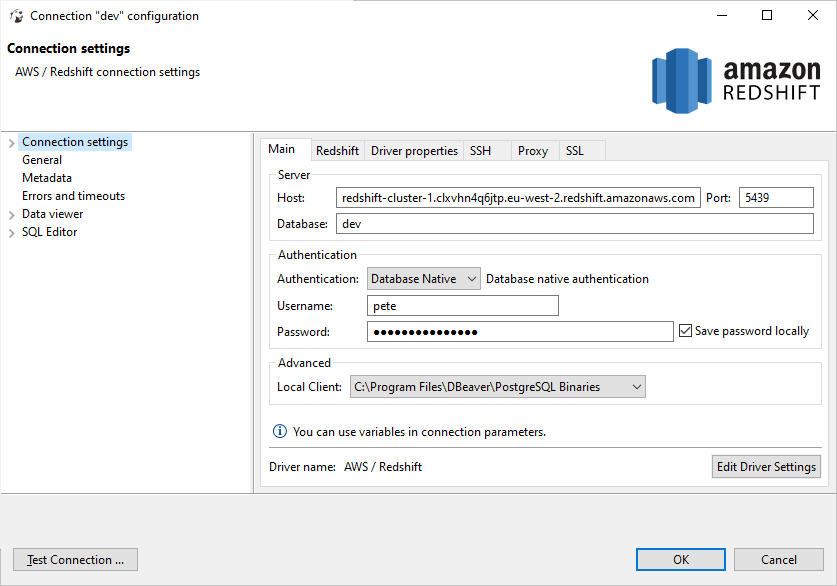

You access materialized views the same as you do a regular table. Sortkey(product_category, Customer_State, review_date)ĪND C.c_current_addr_sk = A.ca_address_sk See the following code:ĬREATE MATERIALIZED VIEW mv_product_analysis In particular, the ETL job drops and recreates the precomputed product analysis table after each ingestion. The ELT job recomputes this data after new data is ingested and stores the data in the precomputed product analysis table to meet the dashboard latency requirement. Without materialized views, you might create an ELT job and use CTAS to precompute the product analysis data. Materialized views also simplify and make ELT easier and more efficient. For more information, see REFRESH MATERIALIZED VIEW.
#Redshift create view update
The materialized views refresh is much faster because it’s incremental: Amazon Redshift only uses the new data to update the materialized view instead of recomputing the entire materialized view again from the base tables. The log shows newer statements at the top. The following screenshot is the query log that shows query performance. Your report queries have the same consistent, fast performance. Within 200 milliseconds, the materialized view is up-to-date again. REFRESH MATERIALIZED VIEW mv_reviews_byprod_and_state
#Redshift create view code
For example, the following code ingests another 10,000 reviews: Now with Amazon Redshift materialized views, you can overcome this problem by efficiently and incrementally refreshing the materialized views with supported SQL. However, as you update base tables with new data inserts, updates, or deletes, the CTAS tables become stale you must recreate them to keep them up-to-date with the latest changes from the base tables. To achieve similar performance without the use of materialized views, many users use the CREATE TABLE AS (CTAS) command.

Speeding up and simplifying ELT data processing The same reports against materialized views take less than 200 milliseconds because the new queries access precomputed joins, filters, grouping, and partial sums instead of the multiple, larger base tables. In this first step, you create a regular view. You also want to drill down to each product category when needed. Creating and using materialized viewsįor this use case, your marketing team wants to build a report that shows how many customers per state like your products. To download the script and set up the tables, choose mv_blog.sql.

The following diagram shows the relationship of the three tables. customer_address – Contains customer address information.customer – Contains customer profile data.product_reviews – Contains customer reviews for a specific product.You will create the following three tables: It is a public dataset stored in the us-east-1 Region. This walkthrough uses the Amazon Customer Reviews Dataset.
#Redshift create view how to
This post demonstrates how to create a materialized view, refresh it after data ingestion, and speed up your BI workload. You can use materialized views to store frequently used precomputations and seamlessly use them to achieve lower latency on subsequent analytical queries. It also speeds up and simplifies extract, load, and transform (ELT) data processing. The Amazon Redshift materialized views function helps you achieve significantly faster query performance on repeated or predictable workloads such as dashboard queries from Business Intelligence (BI) tools, such as Amazon QuickSight.


 0 kommentar(er)
0 kommentar(er)
